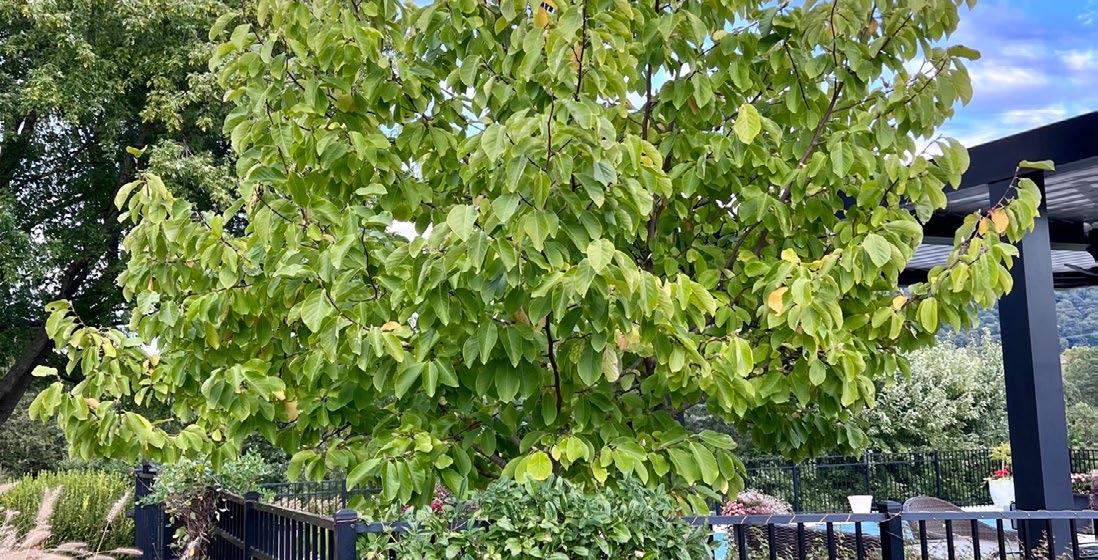
2 minute read
The Magnolia for That Tight Spot—Magnolia ‘Butterflies’
By Joel Hafner, Fine Earth Landscape, Inc.
When clients ask for a tree that stays small, can grow in full sun or part shade, and provides a beautiful flower, many of us in the industry automatically start thinking that Styrax, dogwood cultivars, crape myrtle, or even a redbud might fit the bill. However, another option has gained popularity over the last decade and is being propagated and planted more readily in the industry—Magnolia ‘Butterflies’
Advertisement
Magnolia ‘Butterflies’ is a cross between Magnolia acuminata, the seed parent, and Magnolia denudata, the pollen parent. What came out of this cross is a magnolia that Michael Dirr claims is superior to all other yellow flowering magnolia.
The cultivar ‘Butterflies’ is a small tree that can grow 15’ to 20’ tall with a spread of 10’ to 15’. It is deciduous and typically will start flowering in late March to early April. The showy flowers are born on naked stems and, when fully open, according to Dirr, give the appearance of canaries perched on the stems. The flowers have six to nine tepals (I have seen articles where it is stated that the tepals can range all the way up to 16) and are 3” to

4” across with a tulip form. The flowers are fragrant and have the aroma of lemon by this author’s nose. While the flowers are beautiful, they are short lived, lasting from a week to a week and a half. The tree typically grows as an upright, single stem plant but can be found in shrub form as well with a multi-stem growth habit. Once the tepals fall off the flowers, the tree will begin to show foliage. Once fully emerged, leaves are dark green, roughly 8” long, and have a cuspidate tip on an oblong leaf. The leaves stay attractive all summer, but the fall color is nominal at best with a gray-brownish hue. Bark is smooth and gray like most magnolia species, and with its silvery, silky buds in fall through winter, the tree maintains an attractive appearance through the winter months. While the tree can produce fruit, it usually doesn’t since insects rarely pollinate its flowers. If you do get lucky and have fruit, it will be reddish-green once mature.
While I have observed few pests on my specimen, the Missouri botanical garden reported that the tree can get leaf spots, anthracnose, canker, dieback, and powdery mildew. These combined with insect issues of weevils, snails, scale, and thrips can lead to potential problems, although for the most part, ‘Butterflies’ is considered free of problems in most instances. The only time these can be a bigger issue is if the tree is planted in areas of extreme drought or constant saturation, or in polluted soil. Keep this in mind when planting to position it in well drained, slightly acid soil.


Finally, care must be taken when transplanting since the tree tends to have a fleshy type root system. Transplanting is best done in early spring, being careful not to site the tree too low. This condition is almost always a death sentence for the tree and/or will cause pest or disease breakouts. Overall, this small tree has low maintenance needs and is tolerant to air pollution. The tree is an excellent specimen as an accent plant or hedge that will provide a spring blast of yellow color and will fit in those tight landscapes or small gardens.











